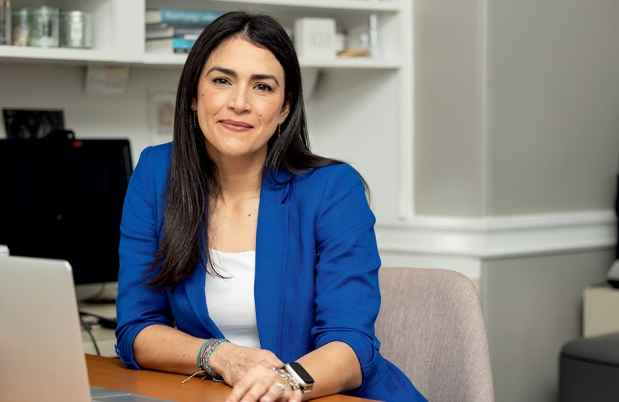On October 25, McLean Hospital’s Education Outreach Department once again collaborated with Stanford University School of Medicine’s Department of Psychiatry and Behavioral Sciences to host a suicide-focused assessment and treatment course for health care professionals.
This free online workshop, which is available on demand on the McLean website, provided attendees with the opportunity to learn from experts across clinical and research areas.
Participants learned about a range of topics, including:
- The most up-to-date assessment and treatment approaches related to identifying and reducing suicide risk
- Current risk factors, including the vulnerability of teens and young adults, and the modalities that are most effective
- The risks of suicide for patients with psychotic disorders and targeted treatment methods
“Most mental health care clinicians will encounter situations related to suicide, whether they are providing direct patient care or offering support to survivors,” said Douglas G. Jacobs, MD.
“This workshop provides updated clinical guidance and resources for professionals in the mental health and related fields.”
Jacobs collaborated with McLean’s Scott J. O’Brien, director of Education Outreach, and Alan F. Schatzberg, MD, Kenneth T. Norris, Jr. Professor of Psychiatry and Behavioral Sciences at Stanford University’s School of Medicine, to host the event.
“Last year’s workshop drew more than 1800 people from around the world,” said O’Brien.
“In response to feedback, this year’s workshop has been shortened to make it easier for more people to attend for the full program.” O’Brien noted that this year, more than 2,000 people joined the event.
Watch the Course Now!
The 2023 Suicide Assessment and Prevention Course is available on demand. Watch now—it’s FREE!

Current Status of Suicide Assessment and Treatment
The day began with a talk by Jacobs and Carsen Sulzer, MD, who provided an overview of Jacobs’ SAFE-T suicide assessment.
Jacobs described suicide assessment as “the quintessential clinical judgment.”
He added that, “No study has identified one specific risk factor or set of risk factors as specifically predictive of suicide or other suicidal behavior.”
He and Sulzer highlighted advances in the field, such as the significance of non-traditional risk factors.
They also discussed why it is important to integrate suicide risk assessment into the electronic medical record (EMR) systems.
Dialectical behavior therapy (DBT) has been shown to help many adolescents cope with thoughts of suicide.
In her presentation, Michele Berk, PhD, assistant professor at Stanford University School of Medicine, provided information on how to apply the DBT framework to an adolescent population.
According to Berk, “The focus of DBT is on teaching people many skills for regulating emotions safely and effectively so they do not need to use self-harm anymore, as well as building a life worth living—where the desire to live and experience a life that feels again worth living to them can override urges for suicide.”
Another highlight of the workshop came from Dost Öngür, MD, PhD, chief of the Division of Psychotic Disorders at McLean Hospital, who spoke about the suicide risks for patients with psychotic disorders—especially schizophrenia.
“Suicidal thoughts can present differently in this population because of the nature of the disease, but there are sometimes ways to identify risks,” said Öngür.
“Understanding when suicide is most likely to happen and how you can address the risks will help to reduce these deaths.”
In his portion of the workshop, David Jobes, PhD, discussed how to address suicide risks for patients with recurrent or chronic suicidality.
“The responses that you might have for someone who is acutely suicidal versus someone who has more of a chronic profile can be distinctly different,” he stated.
Jobes described how the therapeutic framework he developed, collaborative assessment and management of suicidality (CAMS), can help address suicide risks for patients with chronic suicidality.
One of the realities of working with patients who are suicidal is the risk to the provider of being sued.
Donna Vanderpool, MBA, JD, an expert in risk management and health care, including telepsychiatry, HIPAA, and forensic practice, spoke about how clinicians can keep patients safe and manage their own liability.
“You are not expected to predict suicide, but you are expected to perform an adequate suicide risk assessment,” Vanderpool stated.
Vanderpool explained how providers can assess for suicidality, implement safety plans, and document patient safety.
Those left behind by suicide have their own experiences, stories, and journeys toward wholeness. Jill Harkavy-Friedman, PhD, who leads the American Foundation for Suicide Prevention’s research program, had a conversation with Jen, who lost her brother Teddy to suicide.
Jen described her grief in the years since Teddy’s death as an evolving but nonlinear path.
“[Grief] changes over time, and it’s been six years now,” Jen said.
“There are some days that I would consider myself healthy. And then there are other days where it feels like I’m back on that day in May. It just depends, but how you carry it changes, and how you manage those feelings changes, but only if you get support.”
Media Requests
Journalist or member of the media? We are available 24/7 for media requests.



